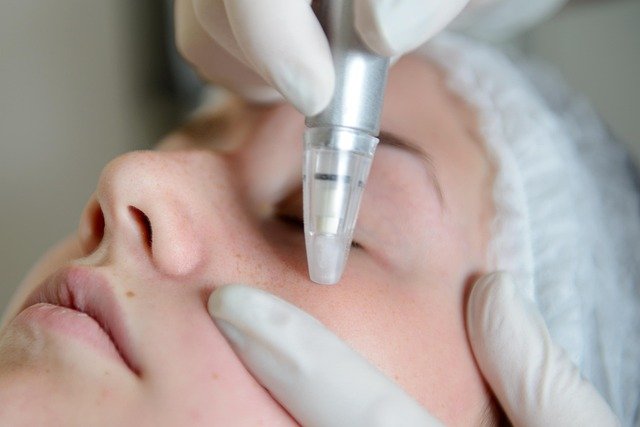Cryotherapy Facials: The Cool New Trend in Skincare
In the ever-evolving world of beauty and skincare, a frosty newcomer is making waves and turning heads. Cryotherapy facials, also known as "frotox," are rapidly gaining popularity as an innovative treatment that promises to rejuvenate the skin and combat signs of aging. This icy procedure, which involves exposing the face to extremely cold temperatures, is capturing the attention of beauty enthusiasts and celebrities alike. As the demand for non-invasive cosmetic treatments continues to grow, cryotherapy facials are emerging as a cutting-edge solution that combines science and beauty in a refreshingly cool way.

The cold therapy also stimulates the lymphatic system, helping to flush out toxins and reduce fluid retention. Additionally, the extreme cold causes a brief stress response in the body, which can lead to the release of endorphins and other beneficial hormones. This combination of effects results in tighter, brighter, and more youthful-looking skin.
From Medical Treatment to Beauty Trend
The use of cold therapy in medicine dates back centuries, with ancient Egyptians using it to treat injuries and inflammation. However, the modern application of cryotherapy in aesthetics has its roots in sports medicine and pain management. Whole-body cryotherapy chambers, originally developed to treat rheumatic diseases, gained popularity among athletes for faster recovery and reduced muscle soreness.
It wasn’t long before the beauty industry recognized the potential of this technology for skincare. The first cryotherapy facial treatments were introduced in high-end spas and dermatology clinics in the early 2010s. Since then, the treatment has evolved, with more advanced equipment and techniques being developed to maximize its benefits for the skin.
The Cryofacial Experience
A typical cryotherapy facial session lasts between 10 to 15 minutes, making it a quick and convenient treatment option for those with busy schedules. The procedure begins with a thorough cleansing of the face to remove any makeup or impurities. Some practitioners may apply a thin layer of cryogenic gel to protect the skin and enhance the cold’s penetration.
The cryotherapy device, which resembles a wand or nozzle, is then used to deliver a controlled stream of liquid nitrogen vapor or cooled air across the face and neck. The sensation is described as intense but not painful, with many clients reporting a tingling or refreshing feeling. As the skin temperature drops, clients may experience a slight numbness, which quickly subsides after the treatment.
Following the cold therapy, a nourishing serum or moisturizer is typically applied to hydrate and protect the skin. Many spas and clinics offer add-on treatments such as LED light therapy or facial massage to enhance the overall results.
Benefits and Results
Proponents of cryotherapy facials claim a wide range of benefits, both immediate and long-term. The most noticeable instant effect is a reduction in puffiness and redness, making it an excellent option for those seeking a quick “pick-me-up” before a special event. The cold therapy also tightens pores and gives the skin a more radiant, glowing appearance.
Over time, regular cryofacials may lead to improved skin texture, reduced fine lines and wrinkles, and a more even skin tone. The treatment is said to be particularly effective for those struggling with acne, as the cold helps to reduce inflammation and bacterial growth.
One of the key advantages of cryotherapy facials is their non-invasive nature. Unlike more aggressive treatments such as chemical peels or laser resurfacing, cryofacials have minimal downtime and are suitable for most skin types. This makes them an attractive option for those looking to improve their skin without the risks associated with more invasive procedures.
The Future of Frosty Facials
As cryotherapy facials gain traction in the beauty industry, researchers and skincare professionals are exploring new ways to enhance and expand the treatment. Some clinics are experimenting with combining cryotherapy with other technologies, such as radiofrequency or ultrasound, to achieve more dramatic results.
There’s also growing interest in at-home cryotherapy devices, which promise to bring the benefits of cold therapy to consumers’ daily skincare routines. While these devices may not reach the extreme temperatures of professional treatments, they offer a more accessible and affordable option for those looking to incorporate cold therapy into their beauty regimen.
As with any emerging beauty trend, it’s important to approach cryotherapy facials with a balanced perspective. While many users report positive results, more long-term studies are needed to fully understand the treatment’s efficacy and potential side effects. As the technology continues to evolve and more data becomes available, cryotherapy facials may well become a staple in the ever-expanding toolkit of modern skincare treatments.
In conclusion, cryotherapy facials represent an exciting development in the world of beauty and skincare. By harnessing the power of extreme cold, this innovative treatment offers a unique approach to achieving radiant, youthful-looking skin. As more people discover the benefits of this frosty facial, it’s clear that the future of skincare might just be on ice.





